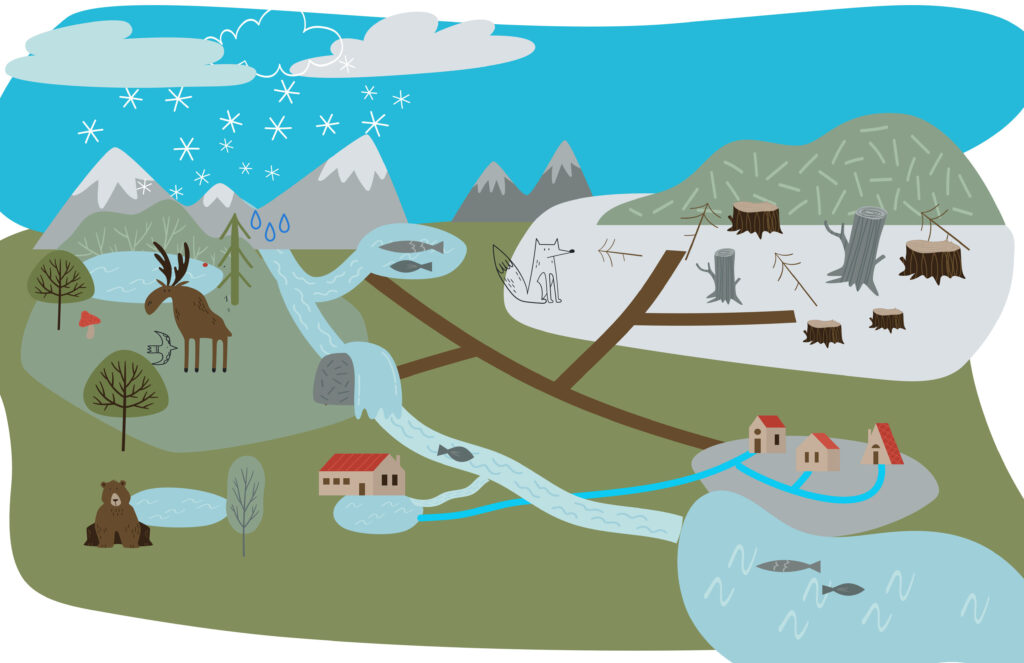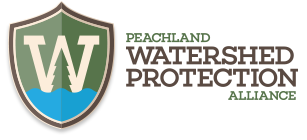The amount of water available in Peachland for ecosystem services, wildlife, agriculture, drinking, and firefighting is solely determined by the winter snow pack.
It arrives as snow melt during the spring frechet, and early summer rains. It flows from the forests and collects in our water reservoir, Peachland Lake.
Climate change will affect the quantity of available water through the year. If there is a fast spring melt, the water does not have time to get absorbed into the ground – storage and purification. Rather the large flows of water speed down stream to inundate the creek channels and we are faced with floods at lake level.
If it’s a dry winter with little snow, there will be less runoff and we may experience droughts in the fall as the snowmelt is not sufficient to recharge ground water supplies, or keep our reservoir full.
The lake fills during the winter and spring, but water is always leaving the reservoir to be delivered to the community. As the Okanagan is a dry climate the spring snowmelt and the rains in June are the only opportunities to create a consistent water supply.
During drought conditions during the summer, little water is added to the reservoir. Peachland Lake becomes drawn down. If it is a wet Autumn, water is added to the reservoir. But climate change is making conditions unpredictable. If there are multiple years of summer drought combined with low snowpack, water quantity will be severely reduced. With climate change, it is the combination of events that bring about extreme consequences.
Industrial clear-cutting also has a monumental effect on how and when the water arrives.

Pure water is a vital ecological benefit produced by forests at no cost, as long as the natural integrity of forests are maintained. However, with the exception of some small non-industrial forestry operations, industrial forestry degrades water quality, quantity, and timing of flow. The degradation of water starts as soon as roads and the first logging occur in a watershed. As more roads and logging occur in a watershed the degradation of water grows.
Herb Hammond RPF,
Where Peachland’s Water Comes From
–
It all starts with snow. The snow melts and eventually flows into Peachland Lake, the reservoir for our drinking water. From there it flows into our water treatment plant, to be treated to be safe for drinking.
And from the treatment plant, it’s pumped to homes, farms and businesses in Peachland.
PEACHLAND DOESN’T GET ITS WATER FROM OKANAGAN LAKE

